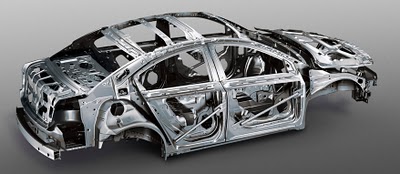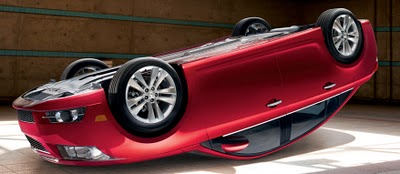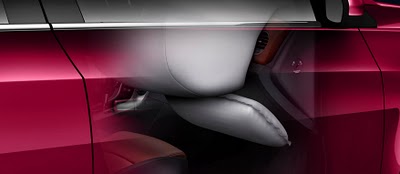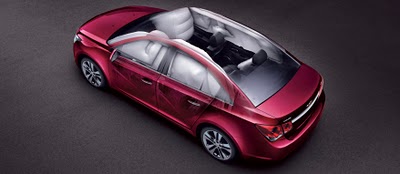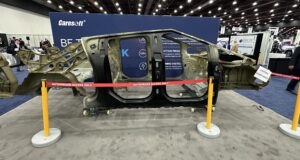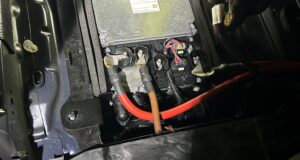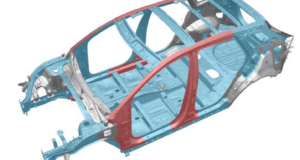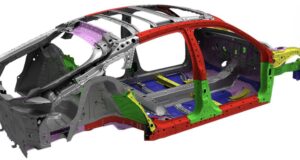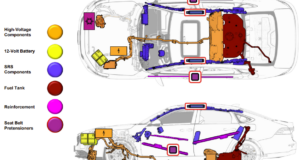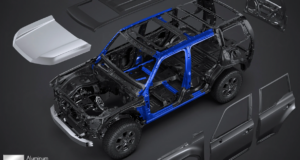The core structure of the 2011 Chevrolet Cruze is a unitary construction fabricated from steel beams, pressings and box sections, with an overall torsional rigidity of 17.66 KNm/degree of deflection. About 65% of the structure is composed of high-strength steels (HSS), approximately 50% more than in its predecessor. About 30% more spot welds are also used throughout the structure.
Efficient load paths provide maximum occupant protection in the event of an impact from virtually any direction. Full-length beams and enhancements to the sills, B-pillars and A-pillars, through the use of high-strength steels and tailored blank processing, all contribute to the vehicle’s excellent crashworthiness.
The energy absorbing front and rear crumple zones are designed to deform as efficiently as possible in order to maintain the integrity of the passenger compartment, which is protected by a safety cage reinforced with tubular-section members that frame the door openings and support the roof. The combination of a single-piece side structure and ultra-high strength steel door beams also provides effective side impact protection.
The 2011 Cruze has a reinforced roof system built into the safety cage to pass the new roof strength tests required in the United States.
Source: Chevrolet
 Boron Extrication An in-depth look into vehicle extrication and rescues involving today's automobiles
Boron Extrication An in-depth look into vehicle extrication and rescues involving today's automobiles

